Butterflies are some of the most beautiful creatures in the world and are greatly enjoyed by nearly everyone. Unfortunately, a number of various butterfly species are critically endangered because their natural habitats are being destroyed by human activity. All of the butterflies on this list are rare because they only live in one specific area.These areas have become more urbanized over the years or affected by natural disasters, such as wildfires and hurricanes, which has negatively impacted the population of these already rare butterflies. Due to their rarity and status as endangered species, all of the butterflies on this list are either listed on the Xerces Society’s Red list of Butterflies and Moths and/or the IUCN Red List.
Macedonian Grayling
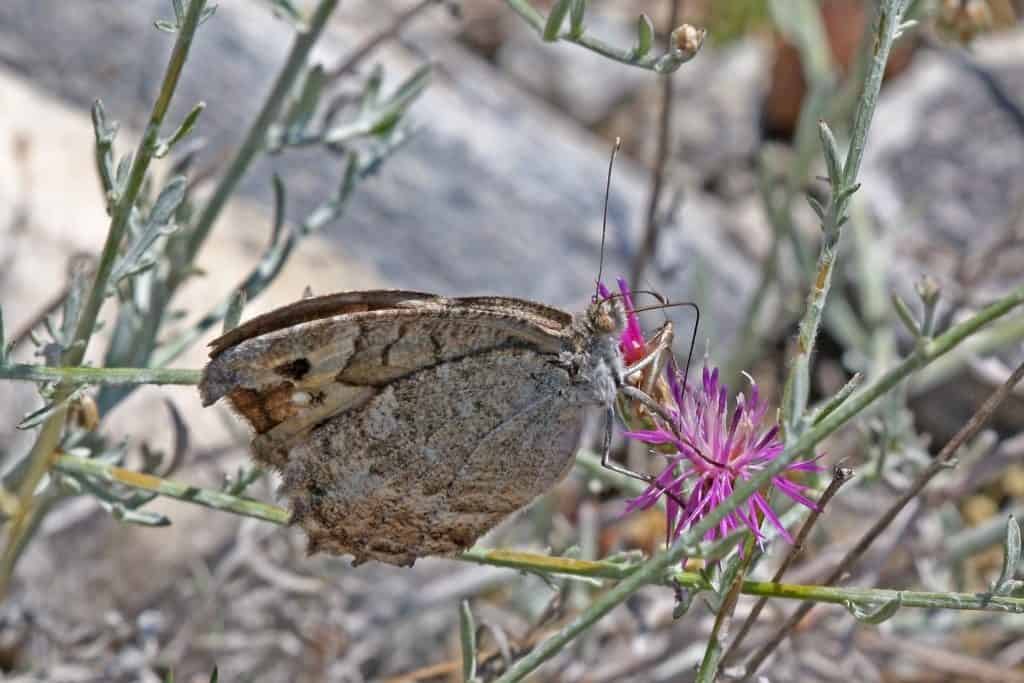
Current Estimated Numbers: about 3,000
Location (Range): Pletvar, Macedonia
Scientific Name: Pseudochazara cingovskii
The Macedonian Grayling is listed as a critically endangered species by the IUCN Red List, with its current population unstable and decreasing. This rare European butterfly is only found in the village of Pletvar in Macedonian and it is estimated that there are currently only about 3,000 adult Macedonian Graylings. The Macedonian Grayling’s habitat in Pletvar has become vulnerable because of quarrying in the area. Unfortunately, five out of the seven known population sites of Macedonian Graylings is near an active marble quarry. When the Macedonian Grayling was first added to the IUCN Red List, it was called the most threatened butterfly in Europe. Subsequent research has turned up a few more colonies in Plevtar, but Macedonian Grayling numbers are still low.
Sinai Baton Blue

Current Estimated Numbers: about 2,300
Location (Range): Saint Katherine Protectorate, Sinai Peninsula, Egypt
Scientific Name: Pseudophilotes sinaicus
The Sinai Baton Blue is not only one of the rarest butterflies in the world, it is also believed to be the world’s smallest butterfly. Sinai Baton Blues are native to one area in the Sinai Peninsula in Egypt called the Saint Katherine Protectorate. It is estimated that there are only about 2,300 individual Sinai Bation Blue butterflies living in an area measuring 7 square kilometers (2.7 square miles). The Sinai Baton Blue’s population is affected by the distribution of Sinai Thyme, which only grows in small patches in the mountains of the Saint Katherine Protectorate. Sinai Baton Blues were first formally described in 1975 and had not really been thoroughly observed until 2001. Conservation efforts have been established since then to ensure that the Sinai Baton Blue survives.
Leona’s Little Blue
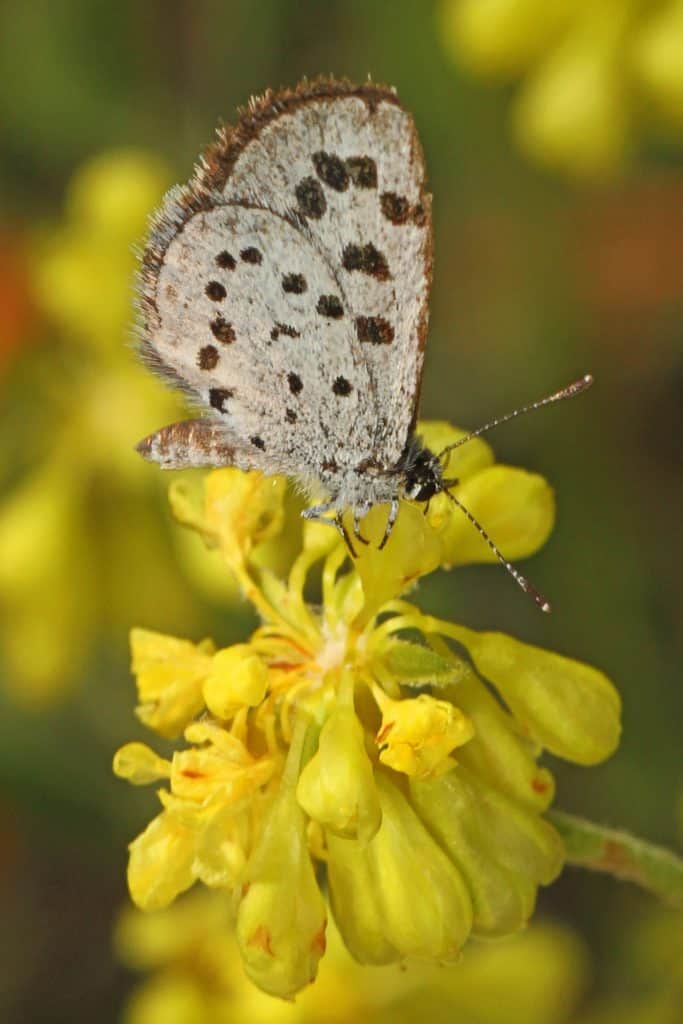
Current Estimated Numbers: 1,000 – 2,000
Location (Range): Antelope Desert, Klamath County, Oregon, USA
Scientific Name: Philotiella leona
The Leona’s Little Blue butterfly was first discovered in 1995 by Leona and Harold Rice in Klamath County, Oregon. The species is only known from this single population in an area of the Antelope Desert that is only 6 square mile (15.5 square kilometer) in size. The current estimated number of Leona’s Little Blues in this one colony ranges between 1,000 – 2,000 individuals. Leona’s Little Blue rely on the spurry buckwheat plant, which has become threatened in the butterfly’s home range due to timber management, lodgepole pine encroachment, fire, fire suppression, and invasive plants. The Xerxes Society for Invertebrate Conservation considers the Leona’s Little Blue as a critically endangered species and has petitioned the U.S. Fish and Wildlife Service to list the butterfly under the Endangered Species Act.
Schaus Swallowtail
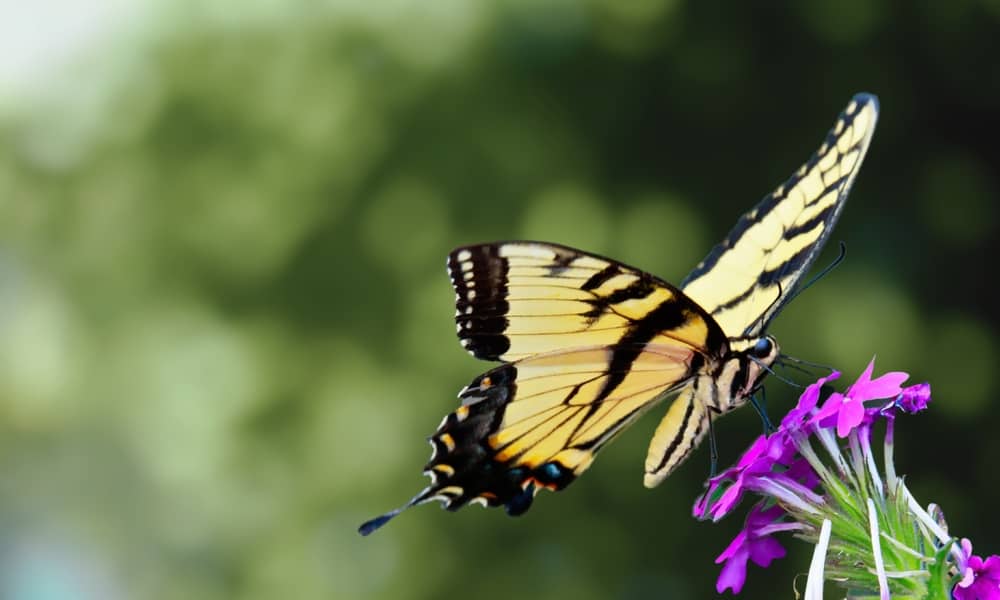
Current Estimated Numbers: 800 – 1,200
Location (Range): Florida Keys, Florida, USA
Scientific Name: Papilio aristodemus
The Schaus Swallowtail was once considered the rarest butterfly in Florida with numbers dipping to just a few hundred. However, through decades of conservation efforts the wild population of Schaus Swallowtail butterflies has recovered and its current estimated population ranges between 800 – 1,200 individuals. The Schaus Swallowtail was first listed as a threatened species in 1976 and was reclassified as endangered, following a severe population decline, in 1984. In 2014, University of Florida scientists started a captive breeding program with the goal of helping the wild population of Schaus Swallowtails recover. The scientists released 50 adult butterflies and 200 caterpillars back into the wild and it was recently reported that their efforts have helped to stabilize the number of Schaus Swallowtails in the Florida Keys.
Saint Francis Satyr
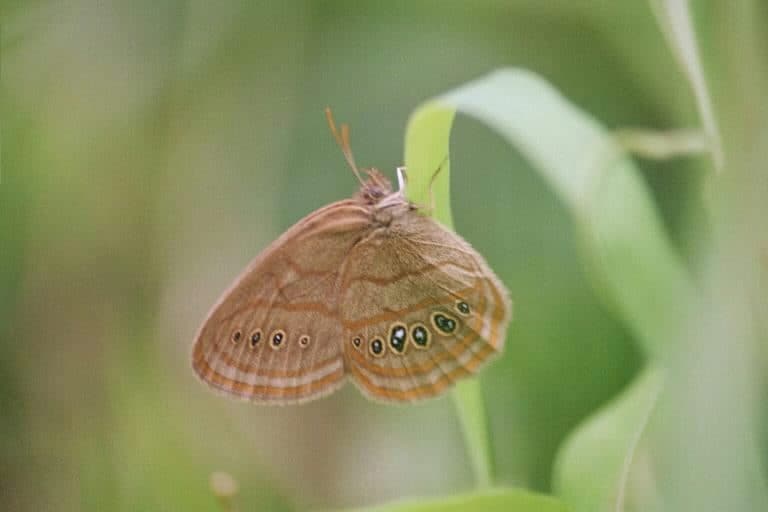
Current Estimated Numbers: 500 – 1,400
Location (Range): Fort Bragg, North Carolina, USA
Scientific Name: Neonympha mitchellii francisci
The Saint Francis Satyr has always had a small population size and can only be found on Fort Bragg in North Carolina. Population estimates for the Saint Francis Satyr range from as low as 500 individuals to between 700 – 1,400. Like most of the butterflies on this list, the Saint Francis Satyr is considered an endangered species whose habitat is being threatened. The Saint Francis Satyr is a fairly newly discovered butterfly and was only first observed in 1983. The original group of Saint Francis Satyrs died out and biologists did not see any more Saint Francis Satyrs until the mid-1990s when they were granted access to artillery ranges on Fort Bragg.
Lange’s Metalmark
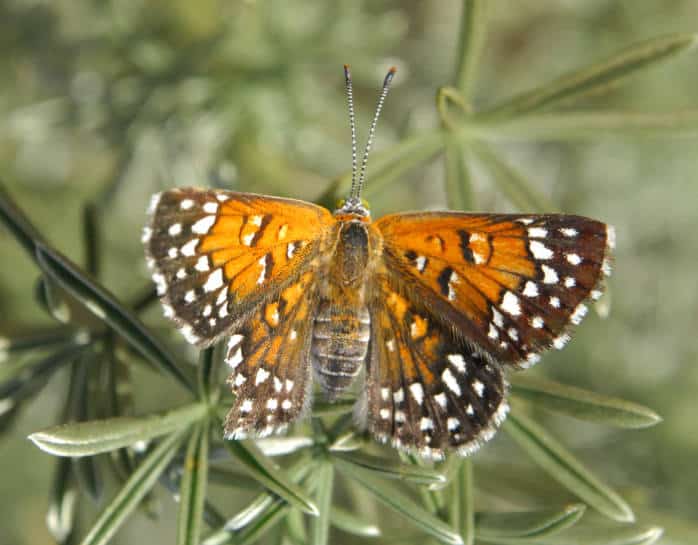
Current Estimated Numbers: fewer than 450
Location (Range): Antioch Sand Dunes, Contra Costa County, California, USA
Scientific Name: Apodemia mormo langei
The Lange’s Metalmark is so rare because it is currently found in only one habitat, the Antioch Sand Dunes in California. The Lange’s Metalmark was first discovered in 1933 and was named by Dr. John A. Comstock of the Los Angeles County Museum of Natural History, for Henry Lange of the University of California at Davis. The butterfly is so rare that it has only ever been found in the Antioch Sand Dunes and nowhere else. The Lange’s Metalmark became an official federal endangered species in 1976 and several efforts have been made to stabilize the species’ population. One of the main reasons for the Lange’s Metalmark’s rarity is because the butterflies will only lay eggs on one specific type of buckwheat, a subspecies called naked buckwheat.
Palos Verdes Blue
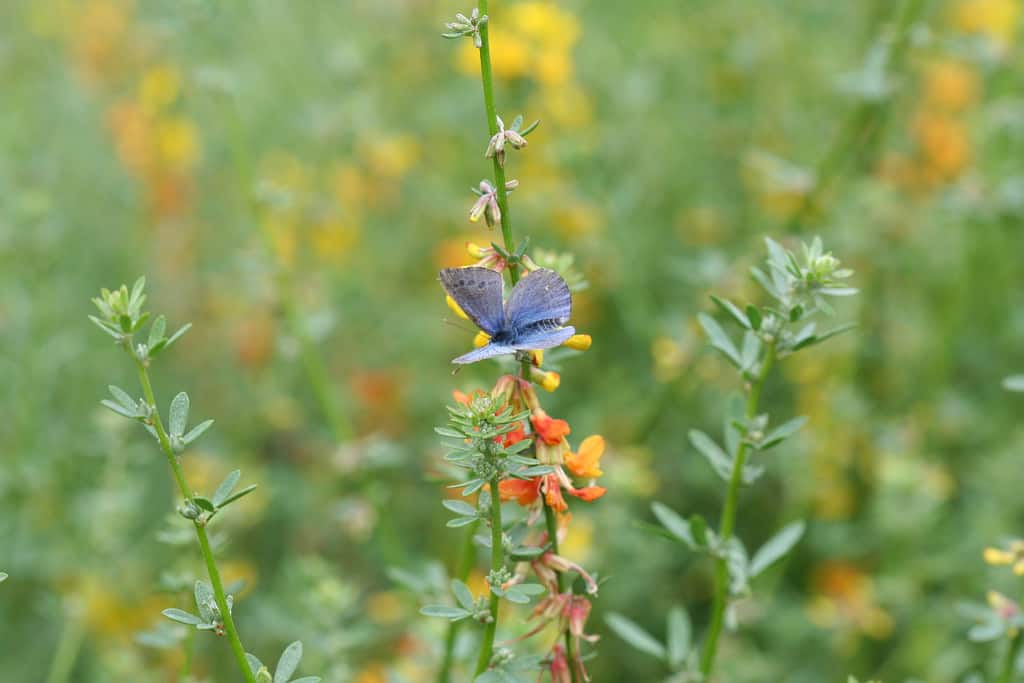
Current Estimated Numbers: about 200
Location (Range): Palos Verdes Peninsula, Los Angeles County, California, USA
Scientific Name: Glaucopsyche lygdamus palosverdesensis
Like many of the other rare butterflies on this list, the Palos Verdes blue was considered extinct for decades. Scientists thought that the Palos Verdes blue had completely disappeared after its last known habitat, a park area in Rancho Palos Verdes, was bulldozed in 1983. However, the Palos Verdes blue was rediscovered in 1994 when a small colony of about 60 butterflies were seen on the Defense Fuel Supply Point property in San Pedro. Since then, conservationists have started a program to make sure that the Palos Verdes blue doesn’t disappear again. In 2009, after years of raising Palos Verdes blue butterflies in captivity, hundreds were released back in to the wild and at the time brought the species’ numbers up to over 4,500. Unfortunately, this population high was short-lived as the continuous drought in California has negatively affected the Palos Verdes blue. It is believed that only about 200 Palos Verdes blue are left in the wild, but there are about 1,450 pupa currently being raised in captivity as backup.
Island Marble
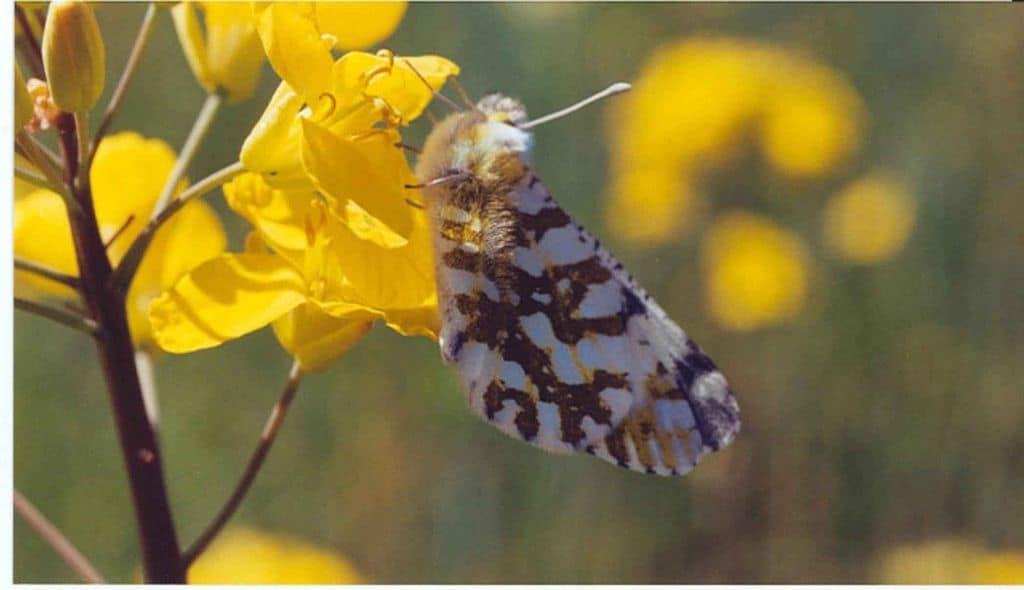
Current Estimated Numbers: fewer than 200
Location (Range): San Juan Islands, Washington, USA
Scientific Name: Euchloe ausonides insulana
The Island Marble is such a rare butterfly that it had not been seen for over one hundred years and was declared extinct. Before being rediscovered in 1998 on San Juan Island, off the coast of Washington state, the Island Marble was last seen in Canadian Gulf Islands in 1908. Zoologist John Fleckenstein of the Washington Department of Natural Resources collected the first specimen of the re-identified Island Marble. Currently, the U.S. Fish and Wildlife Service is trying to get the Island Marble listed as an endangered species. Although scientists have worked hard to help the population of Island Marbles grow, its numbers have continued to drop. In early 2018, it was reported that scientists only counted fewer than 200 Island Marbles at San Juan National Historic Park.
Miami Blue
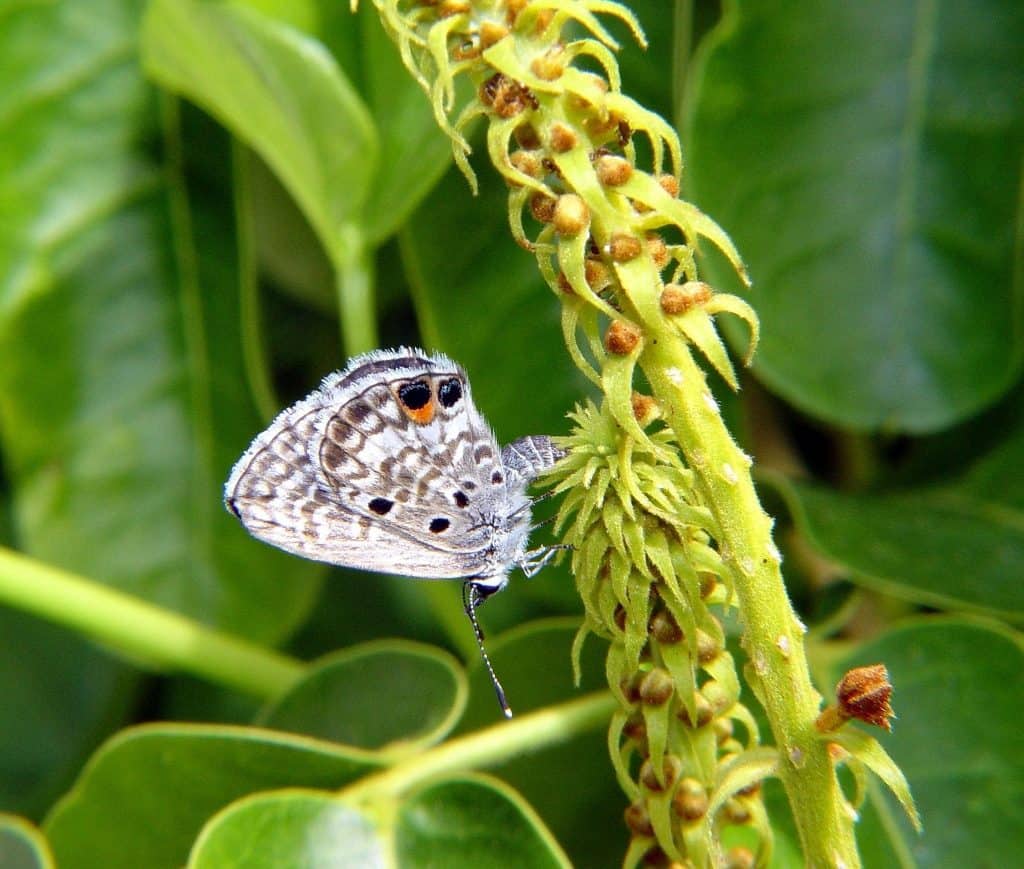
Current Estimated Numbers: fewer than 100
Location (Range): Florida Keys, Florida, USA
Scientific Name: Cyclargus thomasi bethunbakeri
In the past, the Miami Blue was quite common and found along the coastal mainland of Florida. Today, the Miami Blue’s numbers have dwindled significantly and it is estimated that there are fewer than 100 individuals. The Miami Blue’s range has also shrunk to just the Florida Keys and with such low numbers it is the rarest butterfly in the world. The Miami Blue has declined so severely due to many threats to its natural habitat. The butterflies’ numbers first took a major hit in the 1980s when Florida’s coastal development took off. Then in 1992, the Miami Blue was nearly wiped out completely by Hurricane Andrew. Until 1999, no one had seen any signs of the Miami Blue and it was believed to be extinct.
This article originally appeared on Rarest.org.
More from Rarest.org
1996 Kennedy Half Dollar Value Guide
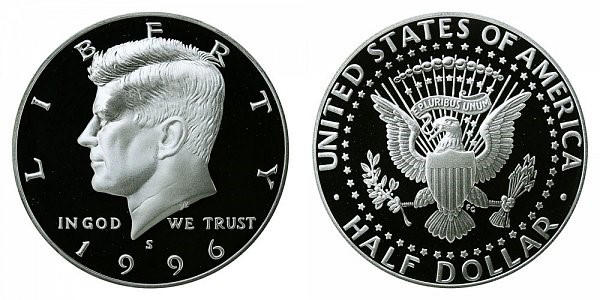
The 1996 Kennedy half dollar is composed of 75 percent copper and 25 percent nickel. Its value is 50 cents with a mass of 11.30 grams and a diameter of 30.61 millimeters. Read More
10 Rarest Cattle Breeds in the World
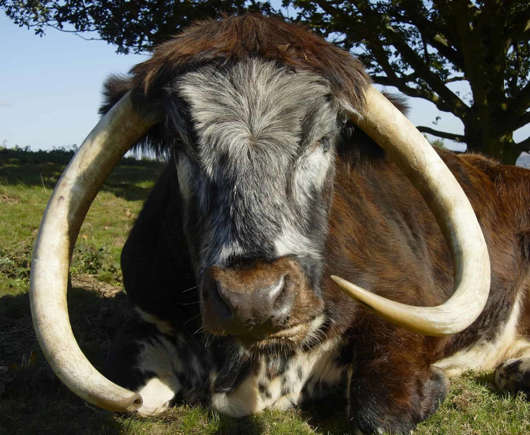
Across the globe, cattle have been bred and cherished for centuries, each breed with its own unique characteristics and heritage. However, some breeds stand out not only for their distinct features but also for their rarity. Read More
1973 Kennedy Half Dollar Value Guide
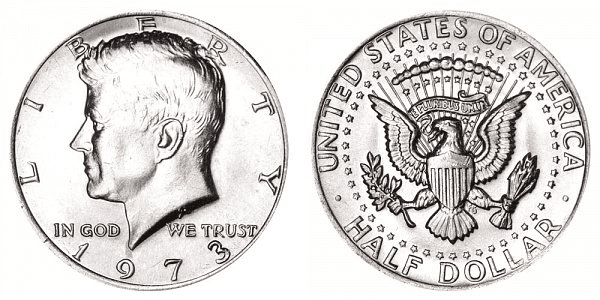
The 1973 Kennedy half dollar is made of 75% copper and 25% nickel. The coin is clad with nickel, and its core is pure copper. However, the Kennedy half dollar was initially made of 60% copper and 40% silver, produced from 1965 to 1970. Read More
